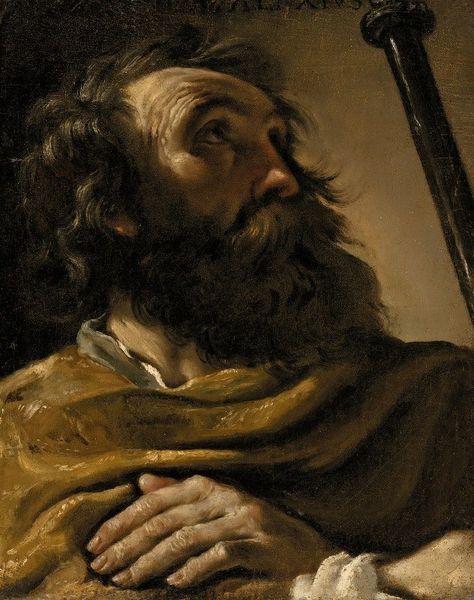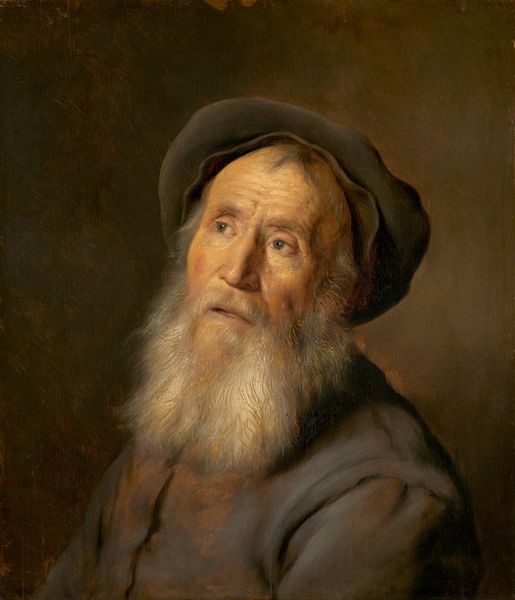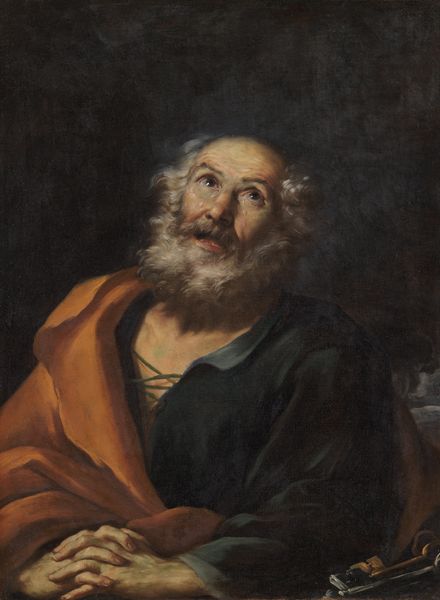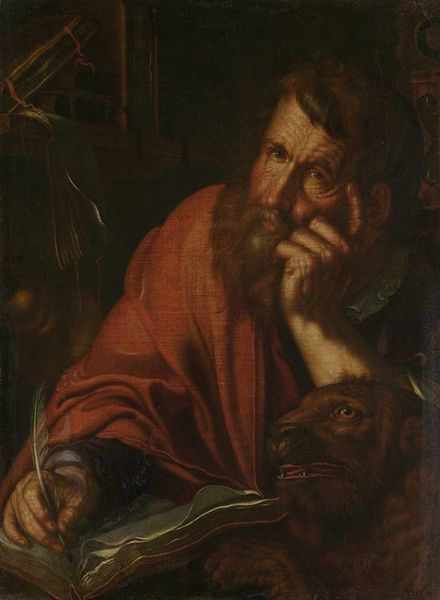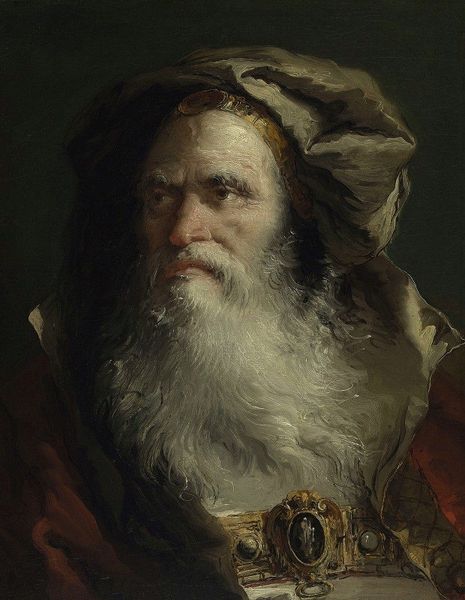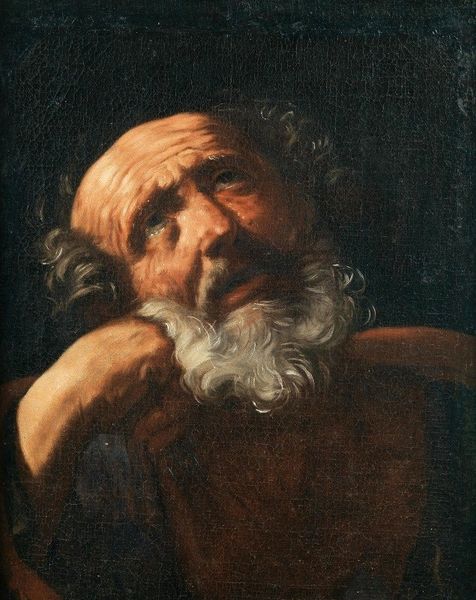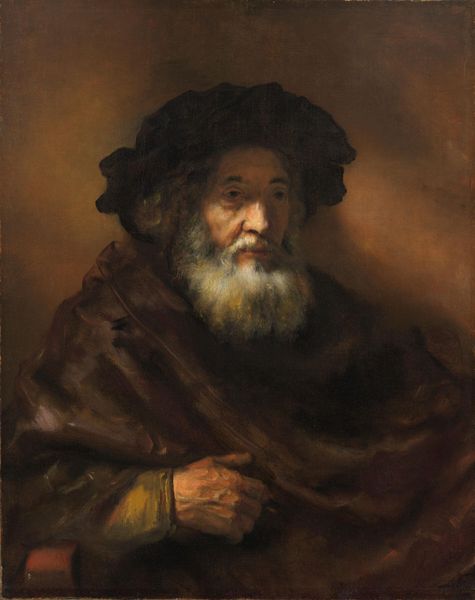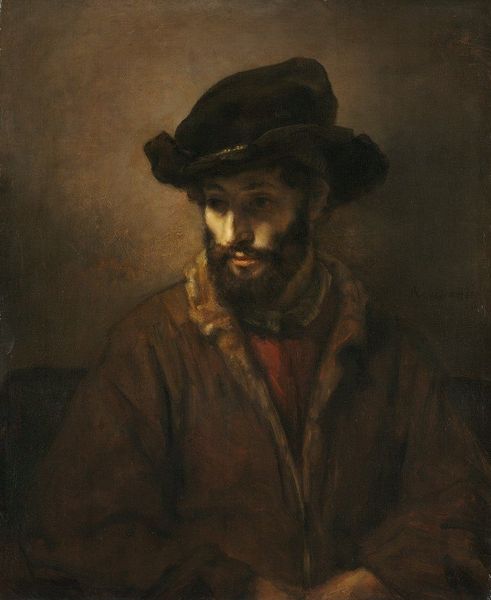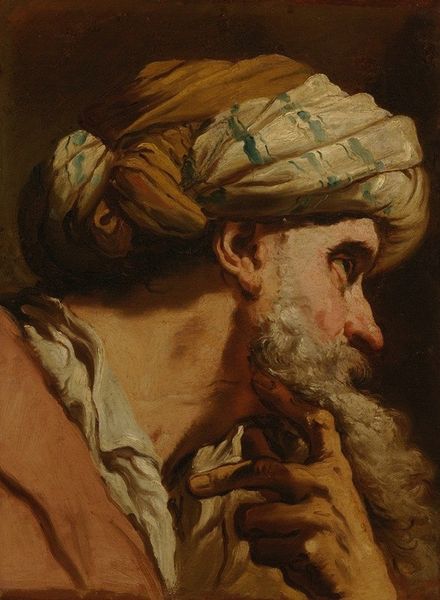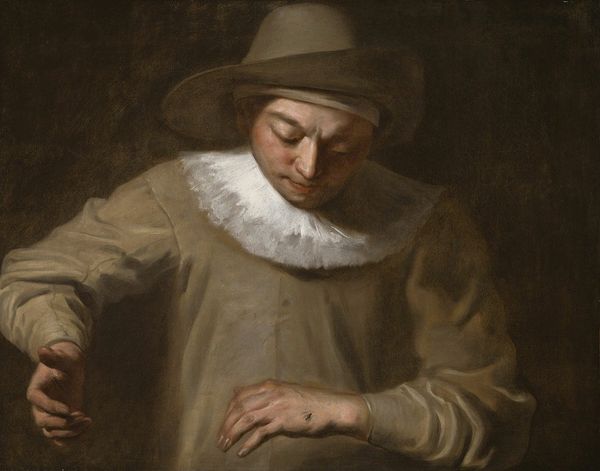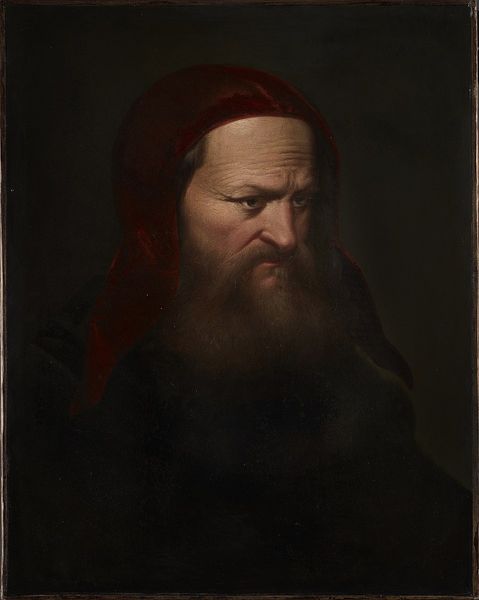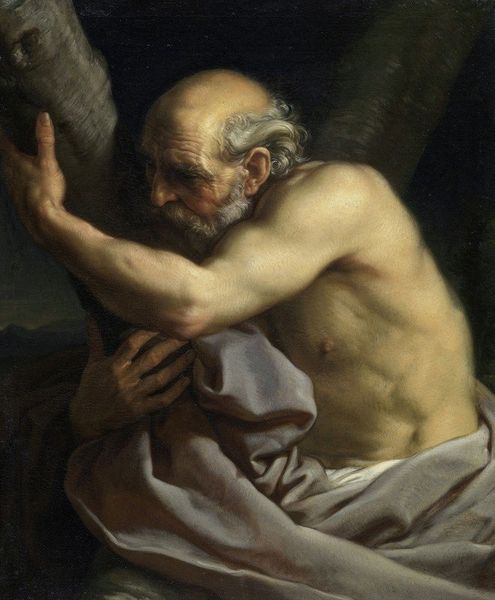
painting, oil-paint
#
portrait
#
figurative
#
baroque
#
portrait
#
painting
#
oil-paint
#
figuration
#
portrait reference
#
portrait head and shoulder
#
animal portrait
#
chiaroscuro
#
animal drawing portrait
#
portrait drawing
#
history-painting
#
facial portrait
#
italian-renaissance
#
portrait art
#
fine art portrait
#
digital portrait
Copyright: Public Domain: Artvee
Editor: We're looking at "Head of a Philosopher," an oil painting by Salvator Rosa. The intensity of the gaze and the deep shadows create such a weighty, almost burdened, feeling. What do you see in this piece? Curator: I see a challenge to the dominant narratives of the time. Rosa paints a philosopher, typically a figure of reason and elevated thought, but presents him with a distinctly human, even troubled, visage. Considering the context of 17th-century Europe, where intellectualism was often tied to power structures, might Rosa be subtly critiquing the exclusivity of philosophical discourse? Editor: That's interesting! I hadn’t considered the potential critique of power. How does the chiaroscuro play into that? Curator: The dramatic contrast isn't merely aesthetic; it's a rhetorical device. The harsh light illuminates the philosopher’s face, highlighting his wrinkles and weary expression, while the deep shadows conceal the rest. It forces us to confront the philosopher’s humanity, disrupting the idealized image often associated with intellectual authority figures. Who gets to be a "philosopher," and what burdens do they carry? Rosa makes us question those very issues of representation. Editor: So you're suggesting the painting pushes back against idealized representations of knowledge and power? Curator: Precisely! By focusing on the raw, almost vulnerable, depiction of this philosopher, Rosa invites us to reconsider who is deemed worthy of intellectual status, prompting us to think critically about issues of accessibility, privilege, and the lived experience of those engaging in philosophical pursuits. What do we expect from a "thinker?" And who do we exclude when we form those expectations? Editor: This has given me a lot to consider about the relationship between art, power, and representation. Thank you. Curator: It's been a pleasure. Art, when viewed through a critical lens, can reveal so much about the social fabric in which it was created, and continues to speak to us today.
Comments
No comments
Be the first to comment and join the conversation on the ultimate creative platform.
